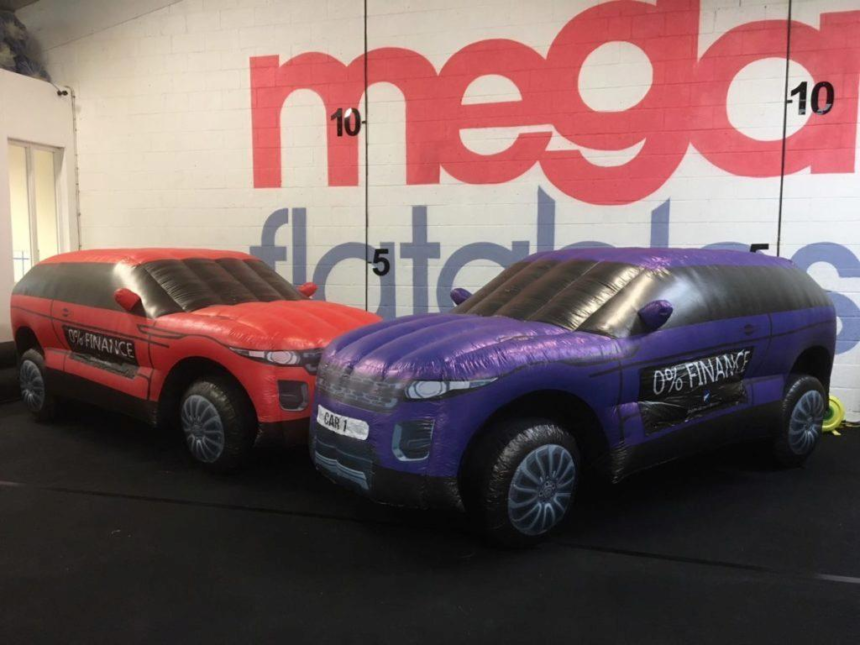Inflatable car replicas are transforming how we train for safety, driving, and emergency response. From driver education to autonomous vehicle testing, these lifelike inflatables provide realistic, risk-free simulations that enhance learning and performance. Discover how this innovative, cost-effective technology is shaping the future of training across industries worldwide.
In a world where technology and creativity intersect, inflatable car replicas have emerged as surprising yet powerful tools for education, safety, and skill development. Once seen only as marketing props, these realistic, full-scale inflatables now play a vital role in driver training, emergency response exercises, and traffic safety simulations—offering safe, cost-effective, and dynamic ways to prepare individuals for real-world situations.
The Evolution of Inflatable Car Technology
Modern inflatable car replicas are engineered with remarkable precision. Made from durable, lightweight materials, they can accurately mimic real car dimensions and even include visual detailing such as headlights, mirrors, and logos. Unlike static or metal dummies, these replicas offer flexibility and mobility, enabling trainers to simulate diverse, high-risk environments without the need for permanent setups or safety concerns.
Enhancing Driver Training Safety
Traditional driver education programs often struggle to simulate real accident scenarios without endangering participants. Inflatable car replicas solve this problem. Instructors can safely recreate collision avoidance, parallel parking, and lane-change exercises. For instance, advanced driving schools use these inflatables to help new drivers practice braking distances and obstacle reactions in realistic yet controlled environments. If a mistake occurs, the vehicle merely deflates—no damage, no danger.
Revolutionising Emergency Response Training
Emergency responders, including firefighters, police, and paramedics, require hands-on training to effectively handle crash sites. Using inflatable cars, they can rehearse vehicle extraction drills, fire containment, and casualty management without relying on scrapped vehicles. These setups can be deployed anywhere, reducing logistical challenges and offering repeated use for continuous learning. The realistic structure ensures teams build muscle memory essential for life-saving operations.
Improving Road Safety Education
Inflatable car replicas are also powerful tools in public awareness campaigns. Schools and community programs utilise them to demonstrate pedestrian safety, the importance of wearing seatbelts, and the importance of complying with traffic signals. Their realistic appearance grabs attention, making them ideal for educational displays that engage both children and adults. For traffic police departments, inflatables provide a visual learning medium to reinforce responsible driving behaviour.
Autonomous Vehicle and Sensor Testing
With the rise of autonomous driving, inflatable car replicas have become indispensable in testing AI sensors, cameras, and radar systems. Tech companies use them to simulate unpredictable traffic movements in controlled settings. These tests enable engineers to assess how self-driving systems respond to hazards, ensuring safety before deployment in real-world environments. Unlike solid models, inflatables minimise risk and cost during testing phases.
Cost-Effective and Sustainable Training Solution
From a financial standpoint, inflatable cars offer excellent value. They are reusable, easy to transport, and require minimal maintenance, making them far more sustainable than physical car models or damaged vehicles. This makes them particularly beneficial for organisations with tight training budgets, such as government agencies, schools, or smaller emergency services units.
The Future of Inflatable Training Tools
As materials and digital integration evolve, inflatable car replicas may soon integrate smart sensors, motion simulation, and AR overlays. These advancements will enable even more immersive and interactive training, blurring the line between simulation and reality. Future models could connect with virtual control systems to simulate full-scale urban driving scenarios safely.
Conclusion
The inflatable car is no longer just a novelty—it’s a transformative tool reshaping how we train, educate, and prepare for road safety and emergencies. From driver schools to AI labs, its applications continue to expand across industries that demand realism without risk. As innovation drives progress, inflatable car replicas stand as a testament to how ingenious yet straightforward designs can save lives, reduce costs, and enhance public safety worldwide.



